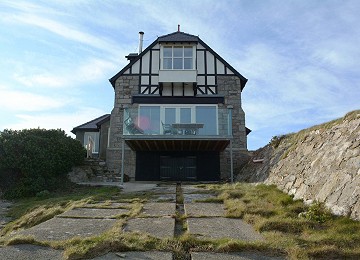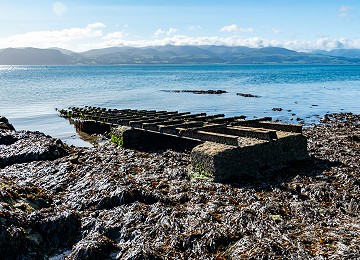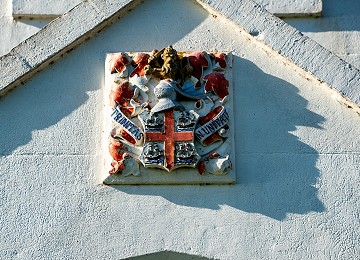Penmon Lifeboat Station
Anglesey Lifesaving Association opened the first lifeboat station at Penmon in 1830, facing in a south easterly direction, straight into the entrance of the Menai Strait.
The eastern entrance of the Menai Strait has always been a dangerous area for mariners. More so in the early 1800’s prior to the construction of the Trwyn Du lighthouse.
The rocks around the area where the lighthouse is, the spit of rocks that extend out to the east of Puffin Island, Perch rock (now marked by a red bouy) and the Dutchman’s bank have always been particularly dangerous and have claimed more than their fair share of life over the centuries.
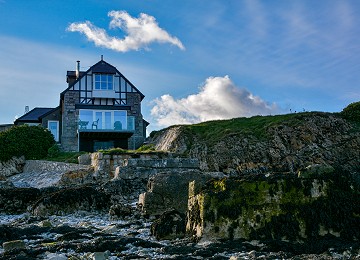
The old lifeboat station is now let out as a holiday home and is the best former lifeboat station on Anglesey.
The lifeboat would have been housed underneath the main house, from behind the black wooden doors which are under the balcony.
The stone pillars which would have supported the launching rails are still very visible with not to much erosion. On a very low tide you can still see the old rails that the lifeboat would have ridden to launch in to the Menai Strait.
The lifeboat station closed in 1915, when the Beaumaris lifeboat was given a new station at Fryars bay. During their service at Penmon, the lifeboats there saved over 143 lives.
The Rothsay Castle
The tragic loss of the paddle steamer Rothsay Castle would be the fuse to lighting an new era of improved safety for shipping in this dangerous area.
Built in 1816 for the relatively quiet waters of the Clyde in Scotland, the Rothsay Castle started running passenger trips between Liverpool and Beaumaris Pier.
On the 18 August in 1831 whilst on a journey from Liverpool to Beaumaris, it is recorded the the paddle steamer was in poor condition and the captain was under the influence of alcohol.
The weather was not good, reported as stormy and the captain ignored a plea from a William Tarrey on behalf of the passengers to seek safe anchorage.
The ship had nearly reached its destination when it ran aground on the Dutchman’s bank, a well known sand bank to the south of Puffin Island, which lies of shore off the Penmon Quarry which provided the stone to build the Menai Suspension bridge.
Nearly 130 people lost their life, only 23 surviving the tragic maritime incident.

Trwyn Du Lighthouse
The lighthouse at Trwyn Du also known locally as Black point due to its mass off dark seaweed covering the rocks was built in 1838 as a direct result of the sinking of the Rothsay Castle.
Trwyn Du Lighthouse was built on rocks to warn shipping that there was no passage between the lighthouse and land. It bears the words No Passage Landward on it.
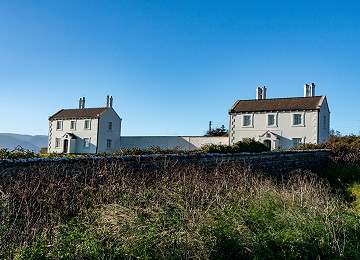
Pilots’ cottages at Trwyn Du
Close to road and the Anglesey Coastal Path there are two large white houses, just down the slope from the Pilot house cafe, facing out to Puffin Island.
These are the former pilots cottages, where the pilots and there families lived.
The pilots would launch their boat and join the passing steam paddle ships and help them navigate the Menai Strait safely up to one of the popular piers where the passengers would disembark.
The pilots were also known to launch their own pilot boats if there wasn’t enough time to raise the lifeboat crew. In 1866 the Pilots prompt action saves all six crew of the Beryl of Aberystwyth, which was on the verge of breaking up on Perch Rock, which is the rocks with the red bouy that can be seen near Puffin Island.
Directions
You will need to go through Penmon Priory to Penmon Point. Walk down the little lane on the right just before the little Pilot house cafe. If you walk to the end of that lane and down the steps to the beach and turn to your left you will see the old slipway.
Postcode is: LL58 8RP If using What3Words app it is /// patrolled.quicker.picked


